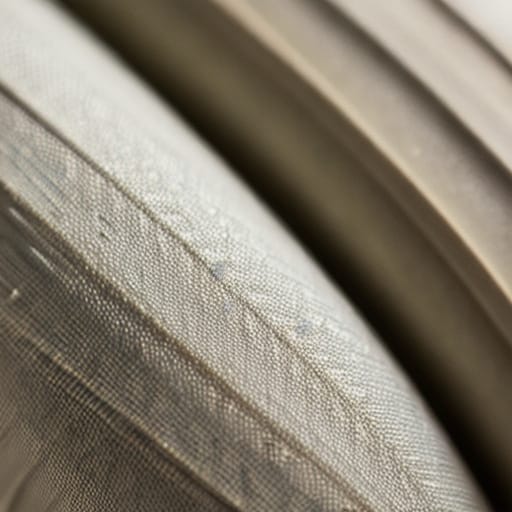When it comes to your bedding, few things are as warm, comfortable, and luxurious as a down comforter. But with prices ranging from a couple hundred to a few thousand dollars, you’ll want your down comforter to last. So how long do they really last before needing to be replaced?
The typical lifespan of a quality down comforter is about 10-15 years with proper care and maintenance. However there are a few key signs indicating when it’s time to replace your comforter:
Signs to Replace a Down Comforter:
- Loss of fluffiness and loft
- Visible holes, tears or damage
- Musty odors that won’t wash out
- Allergy symptoms when using
By understanding what impacts the durability and learning proper care methods, you can maximize the life of your comforter investment. This beginner’s guide will walk through everything you need to know about down comforter replacement from when to swap it out, to how to choose your next comforter.
Factors That Impact Down Comforter Longevity
Multiple aspects affect how long a down comforter will last before needing to be replaced:
Down Comforter Fill Power
The fill power indicates the fluffiness and insulation quality of the downfill. Higher fill powers around 600-900+ last longer than comforters with fill powers less than 500.
Down Comforter Material
Pure goose or duck down is more durable than cheaper polyester alternatives. Premium eiderdown comforters can even last 30+ years.
Usage and Care
Frequent use, improper washing methods that damage the down, improper storage causing moisture damage can decrease the lifespan.
Here’s a comparison of how aspects like fill power impact longevity:
| Fill Power | Estimated Lifespan |
|---|---|
| 300-400 | 5 years |
| 500-550 | 8 years |
| 600-650+ | 12+ years |
| Eiderdown | 30+ years |
In general, investing in a higher quality down comforter paying attention to material, thread count, and construction will pay off with more years of use before a replacement is needed.
Down Comforter Replacement Guidelines
While some down comforters may last over 30 years, most need to be replaced every 10-15 years.
Follow these guidelines for when to replace your down comforter:
- Every 5 years for bargain quality with low fill power
- Every 8-10 years for mid-range quality
- Every 12-15 years for premium high fill power goose down
- Over 30 years for ultra luxury eiderdown comforters
Inspect your comforter each year for signs of damage and deterioration. It may need to be replaced sooner if it’s showing significant wear despite proper care.
Signs It’s Time to Replace Your Down Comforter
Don’t wait until your comforter is completely falling apart. Replace at the first signs of deterioration:
1. Loss of Fluffiness & Clumping
Over time, the baffles inside the comforter that keep the down evenly distributed can break. This causes lumpiness and flat spots. If washing no longer restores fluffiness, the comforter needs retirement.
Down shifting and moisture damage can also cause clumping and loss of loft.
2. Visible Holes, Tears or Damage
Thin spots, ripped seams not reparable by patching, holes from pets or snags from normal use all indicate replacement time.
While you can continue using with minor damage, it will likely progress requiring a new comforter anyway.
3. Musty Odors
A buildup of body oils and sweat can lead to difficult to remove odors embedded in the down, feathers, or fabric.
Try washing with odor removing products first, but if smells remain, it’s best to replace them.
4. Allergy Symptoms
Worn out comforters accumulate more dust mites, mold, and allergens. If your allergies act up using your older comforter, it likely needs replacement even without other signs of wear.
New comforters with high thread counts and allergen-resistant fabric offer relief for those with sensitivities.
Maximizing the Lifespan of Your Down Comforter
While 10-15 years seems too short for such a pricey investment, there are tips to keep your comforter lasting as long as possible:
Better Care Habits:
- Always use a duvet cover for protection
- Wash every 6 months according to guidelines
- Air out and fluff after washing
- Store properly off-season
Professional Service:
- Dry clean every 2-3 years
- Seek repairs from alterations shops for minor damage
- Sanitize if odors develop
Follow usage and care instructions from retailers and manufacturers because improper methods lead to premature wear.

What Impacts the Cost of Buying a New Down Comforter?
While an eiderdown comforter may run over $2,000, quality options start under $200 making replacement every 10-15 years affordable.
Prices range based on:
- Size – Twin vs King
- Material – Goose vs duck down vs alternatives
- Fill power – Higher fill power costs more
- Brand – Luxury designers vs budget names
- Sales – Specials around holidays, clearance items
Here’s a pricing chart of average costs for new down comforters:
| Type | Twin Price | Queen Price | King Price |
|---|---|---|---|
| Goose Down | $200-$500 | $250-$600 | $350-$800 |
| Duck Down | $100-$400 | $150-$500 | $200-$600 |
| Down Alternative | $50-$250 | $100-$300 | $150-$400 |
Goose down averages a 20-30% higher cost than duck. Synthetic options use technology to mimic down at lower price points.
Comparison shop for sales on quality materials over low fill bargain versions for longest lasting comfort.
Making A More Eco-Friendly Choice
Part of being a responsible consumer means understanding the environmental impact of our purchases.
Fortunately for down comforter buyers, options exist for sustainable sourcing along with recycling when replacement time comes:
Sustainable Sourcing:
- Certifications like RDS ensure ethical down production
- Alternative materials like PrimaLoft mimic down
Recycle and Dispose:
- Donate to organizations like homeless shelters
- Check for recycling programs in your area
- Use eco-friendly dry cleaning services
While caring for your comforter properly keeps materials out of landfills longer, some wear is inevitable. Follow earth-friendly tips at each stage of ownership.
Choosing the Right Down Comforter
Getting the most lifespan out of your comforter starts with choosing the right one from the start. Keep these tips in mind when shopping:
Match Climate Needs First
Think about your climate and seasons when selecting fill power. Higher fills work better for cold regions while lower fills suit warmer southern regions. No one fill power works perfectly year-round across all locations.
Pick Appropriate Size
Don’t size down too small or up too large. Twin sizes work for individual sleepers while King Down comforters drape well over the edges of larger mattresses.
Set Realistic Budget
While $100 bargains may tempt your wallet, lower quality requires replacing sooner. Spend at least $250+ for a longer term goose down comforter investment.
Handle In Store Before Buying
Test out comforters in person before purchasing when possible. Make sure loft, fabric, weight all meet your preferences by touch test.
Choosing quality materials suited to your climate and bed size gives the best odds of minimizing replacement needs.
Alternatives Beyond Down Comforters
While down comforters make a top choice for insulation and coziness, other bedding options exist including:
Down Alternative Comforters
Synthetic fills like polyester and rayon mimic down at lower price points while being hypoallergenic.
Duvet Inserts
Thinner than comforters allowing adjustable warmth via duvet covers. Easy to wash and less weight.
Wool Blankets
Natural material alternative adding weight and breathability. Avoid purchasing poor quality low wool content bargains.
Each alternative has tradeoffs to weigh against your needs and preferences. Adding layers brings customizable comfort adjustments missing from single comforters.

Conclusion: Plan Ahead to Extend Your Investment
Expect to replace a quality down comforter every 10-15 years on average with proper care
Avoid surprises by budgeting for replacement ahead of time. Schedule annual inspections to catch deterioration early before it accelerates. Stick to care guidelines for cleaning, storage and handling.
While upgrading to a luxury eiderdown version extends the timeframe between new purchases, even budget goose down outlasts alternative bargains. Pick materials suited to your climate and bed size rather than sacrificing on quality to save money upfront.
By setting proper expectations of typical down comforter lifespans and replacement timelines, you can maximize coziness and minimize unpleasant surprises. Paying a bit more upfront ensures your next comforter investment provides over a decade of warm comfort.
Frequently Asked Questions
How often should I replace my down comforter?
Plan to replace a quality down comforter every 10-15 years on average with proper care. Higher fill power goose and duck down may last over 15 years while lower quality needs replacement more often at 5-8 years.
What are signs my down comforter needs replacement?
Replace at first signs of lost loft, lumpiness, holes/tears, musty smells, or allergy triggers. These signal the down and baffles are deteriorating and unable to provide warmth and support.
Is it worth paying more upfront for a better quality down comforter?
Yes, higher fill powers above 600 with better thread counts and premium materials will last significantly longer. Budget options under $150 need replacing sooner despite cheaper initial pricing.
How much does it cost to replace a Queen size down comforter?
Expect to pay $250-$600 for a new Queen size goose down replacement with decent year-round fill power. Sales prices may dip below $200 at certain holidays or clearances.
Can I repair the damage to extend my down comforter’s lifespan?
You can patch small holes, tears, or seams to minimize further damage and loss of fill. But once insulation capability drops significantly with shifting, major repairs become less worthwhile than replacement.
Can I recycle or donate my down comforter when replacing?
Yes! Check for recycling centers in your area that take textiles including comforters, especially if the filling remains in usable shape. Local shelters also accept donated bedding in cleanly usable condition.
What’s the best down alternative to a comforter for adjustable warmth?
Duvet inserts paired with different duvet covers allow easy customization of warmth and weight night-to-night. The thinner inserts wash easier than bulky comforters while covers protect the insert.








